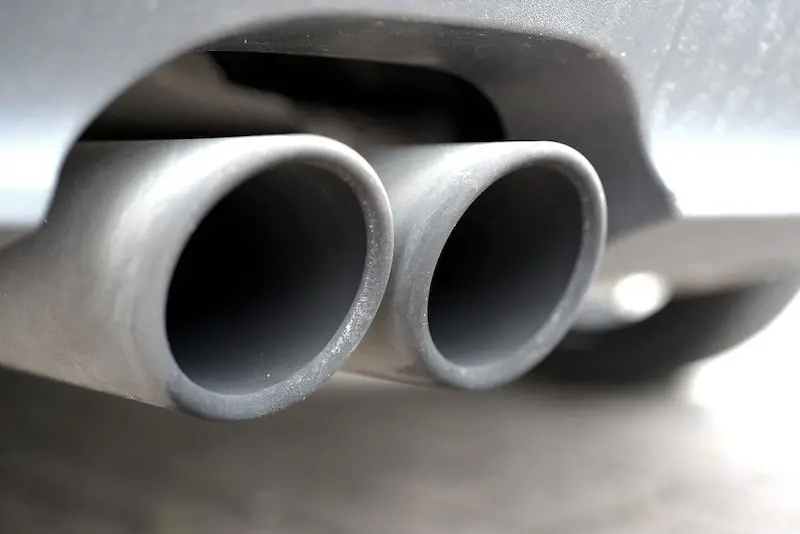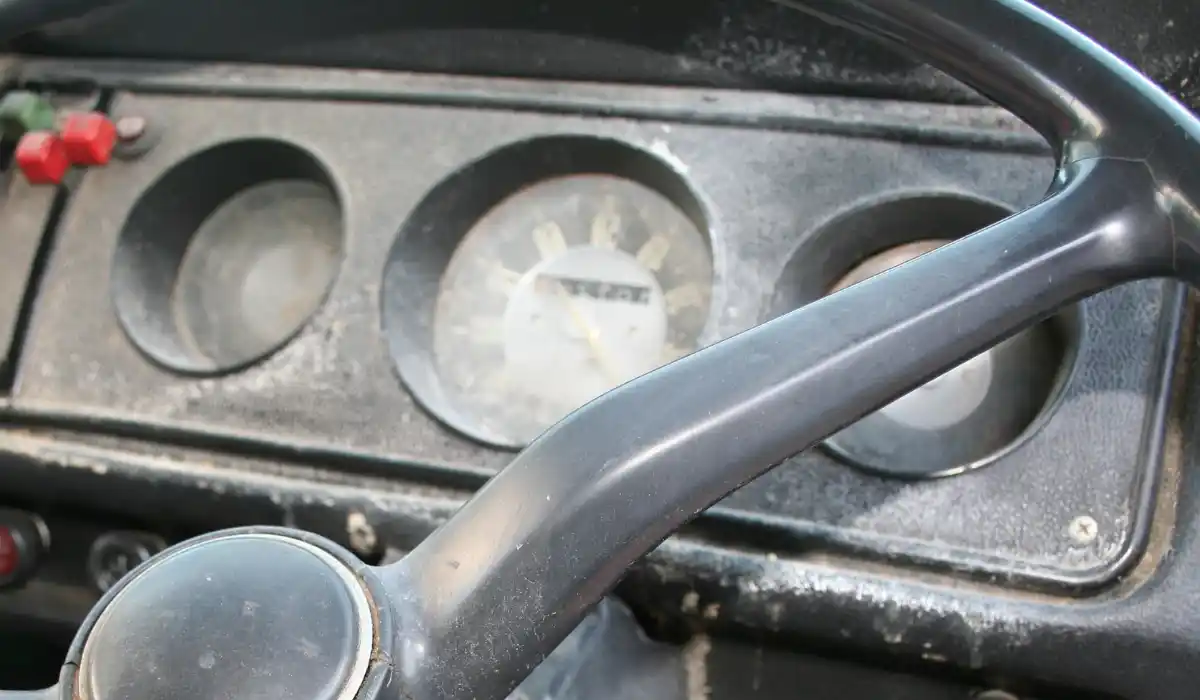
Do you ever get alarmed when you see white smoke coming from your car exhaust? In the winter, this is normal, but during the summer there could be an issue.
Most of you have probably seen smoke coming out of the exhaust pipe. It can come out in different colours, with white being the most common.
The tailpipe on your vehicle, otherwise known as the exhaust, is the emissions outlet. This is where smoke and vapors exit the engine to get dispelled in the atmosphere.
Generally, most emissions are harmless and typically there’s nothing to worry about. However, there are some different types of emissions that reveal something could be wrong with your car.
White smoke from the exhaust pipe is something you definitely want to look into. While this could be from condensation, there could also be a problem with your vehicle.
Look at it this way – the thicker the white smoke, the more serious your problem. If it’s just a thin, light vapor then you can exit this page since you have nothing to worry about. Otherwise, keep reading to learn more about the problem and how to solve it.
Jump Ahead To:
Causes of White Smoke From Exhaust

There are a number of different reasons why there could be white smoke coming from the exhaust of your vehicle.
Let’s take a look at the different causes and hopefully you’ll be able to get to the root of your problem.
White Smoke From Exhaust on Startup
Most often, you’ll see white smoke coming from the exhaust when you start your car. As I mentioned earlier, this is common on cold winter days.
During the winter, or colder months, what you’re seeing is steam from condensation of vapor. As the engine begins to warm up, this vapor cloud should start to reduce and eventually disappear.
If white smoke keeps coming out of the exhaust, this signifies another problem. Give it a few minutes and if nothing changes then you should be able to find the issue in this post.
Leaks From Internal Coolant
One of the most common causes of white smoke from the car is an internal coolant leak. This is something that should be fixed right away, as the coolant could potentially contaminate the engine oil.
Thankfully, this issue can be determined quickly. Along with white smoke, you’ll be able to smell a sweet odor. This would be from the coolant mixing it to the exhaust vapor.
Another way you could tell is by checking the coolant reservoir. If the coolant level is low, there could be a leak in the internal coolant.
Should you determine to be the issue, bring your vehicle to a local licensed mechanic right away. They’ll be able to help you fix the internal coolant leak and stop the white smoke from coming out of your exhaust.
The Cylinder Head is Cracked
Another popular reason for white smoke from the engine is a cracked cylinder head. It can also be caused from a cracked engine block or head gasket failure. Each of these three problems are the result of an overheating vehicle.
What happens is that the cracked cylinder head releases coolant into one or more of the cylinders. Coolant can sometimes even get released into the combustion chamber.
This causes white smoke once the engine is turned on and the internal components start heating up. It’s possible to crack the cylinder head from the engine overheating, which is a major problem on its own.
These issues are likely due to the coolant. Either the coolant is dirty, there are low coolant levels, a non-functional cooling fan, or the coolant system has been poorly maintained. It’s important to keep up-to-date with basic car maintenance to avoid any of these issues.
Wear and tear of the engine can sometimes cause the head gaskets to lose their ability to properly seal. This is another reason why coolant could leak into the engine chamber.
If this is what you suspect your issue is, it’s important to visit your mechanic immediately. Ignoring these issues could cause your engine to seize, resulting in a highly expensive repair.
Broken Fuel Pump Injection
With diesel cars, white smoke can be the result of poor or broken fuel pump injection timing. The fuel pump is responsible for pumping diesel fuel into the cylinders of the engine.
Timing is important as the fuel is injected slightly before the end of the specific cylinder’s compression stroke. If the timing is off, fuel efficiency can suffer and the engine could become overrun with diesel fuel.
Another symptom of a mismatch in fuel injection can be thick white smoke coming out of the exhaust. This would likely be the cause of white smoke coming from a diesel engine.
Replacing the fuel pump, or fixing the timing, is not something most people can do on their own. A mistake here can be disastrous for your vehicle. If you determine this to be your problem, definitely take it to your local mechanic for repair.
Problems With Other Components
The issues mentioned so far are likely to be the most common causes white smoke coming from your tailpipe. However, it’s possible that there could be problems with other components of your vehicle.
Unfortunately, there could be an expensive and complicated issue caused by a malfunctioning in a combination of different parts. It’s possible that more than one component isn’t functioning properly or causing problems. This could be due to a damaged fuel filter, clogged engine, or something worse.
Whenever you’re in doubt, it’s always a good idea to visit your local mechanic. Otherwise, let’s take a look at how you can fix your white smoke problem.
We recommend solving any issues before they get too big. Faulty parts and broken vehicle components need to be addressed right away, even if there is an expensive repair process.
It’s possible that entire parts need to be repaired or replaced. Things like this aren’t cheap and might take a big chunk out of your vehicle maintenance budget.
Keep in mind that the sooner you fix a problem, the less severe it can become. Ignoring issues with your vehicle can lead to serious problems and even more expensive repairs. You may even have to scrap or abandon your vehicle if you ignore serious issues for too long.
Possible Solutions to White Smoke Exhaust
In this section we’ll look at some of the possible solutions to fixing your problem with white smoke. If you’re not mechanically inclined or capable of determining the specific issue, your best bet is to bring your vehicle to your local mechanic.
Making any mistakes during the repair process could actually make the existing problem even worse. This could lead to more problems in the future, costing you more time and money to get your vehicle repaired.
Those of you with vehicle maintenance skills can continue browsing online or head to YouTube for helpful tutorials. There is a lot of information available online for fixing various car problems.
Check Coolant Levels

The first thing to check if there’s white smoke coming from your exhaust is the coolant levels. This is as easy as opening the engine hood and checking the coolant level in the reservoir.
Low coolant levels or a cracked cylinder head might be revealed during this process. This would make it easier for you to pinpoint the issue.
To begin, wait for your engine to cool down before checking the coolant level. Next, open the hood and look for the reservoir. Typically, you’ll be able to see the coolant levels inside the reservoir. If the coolant levels are low, this could be the cause of your problems.
Should you determine that the coolant levels are adequate, it’s time to check other areas of your vehicle. Take a look at the cylinder heads and see if the head gasket closes properly. Check that the engine block isn’t cracked or damaged as well.
Inspect the Intake Gasket

If you didn’t find any issues with the coolant, it’s time to move on to the next possibility. This would be the intake gasket.
The intake gasket is what seals the manifold to the cylinder head. This should be visible right when you open the hood.
It’s important that the seal is intact, otherwise coolant could enter the combustion chamber. This could be the cause of white smoke while driving.
Start by inspecting the intake gasket. If it’s not cracked, broken, or damaged in any way, inspect the head gasket next. Look for anything that’s broken, cracked, or damaged.
Keep moving through the different gasket components while looking for any possible issues. Up next you’ll want to check the cylinder head. Look for a crack, or any obvious damage.
Should you find any visible problems with these components, it’s possible that this would be what’s causing white smoke coming from the exhaust. If you’re not able to repair these components on your own, don’t hesitate to visit your local mechanic for a second opinion.
White Smoke From Exhaust FAQ

So far we’ve covered the most common causes of white smoke from your exhaust. Here is some more helpful information if you’re still dealing with this issue.
What is the Reason for White Smoke From the Exhaust While Accelerating?
If you’re experiencing this issue during the warmer months, this is something you should be looking further into. There could be a problem with either burning coolant or the transmission fluid.
If the problem is because of your coolant, there will be a sweet smell coming from the exhaust. This is harder to check, but you can get one of your friends or family members to smell the exhaust while you’re driving by.
The problem is with your transmission fluid, it’s possible that there is fuel getting into the engine. This could be the cause of white smoke coming out of the tailpipe whenever you accelerate. Check for a burned oil smell whenever you stand on the gas pedal.
Could Exhaust Smoke Come in Other Colors?
Along with white smoke, it’s possible that your vehicle could have black smoke, grey smoke, or even blue smoke coming from the exhaust. Each of these indicates a different issue with your vehicle.
With black smoke, it’s possible that gasoline has flooded the combustion chamber. This is in contrast with white smoke, which is caused from leaking coolant.
Black smoke could also be caused from a clogged fuel filter, problems with the fuel injectors, fuel sensor issues, and anything else related to fuel getting injected into the combustion chamber. This is yet another serious issue and should be brought to the attention of your local mechanics right away.
With blue smoke, you’re looking at a leak in the combustion chamber or burning oil. Grey smoke could be the result of problems with transmission fluids, a faulty transmission vacuum modulator, a bad turbo charger, and a host of other vehicle issues.
Whenever there is smoke coming out of the exhaust, the color helps to indicate the problem. Anytime you see smoke, it’s a good idea to look into it further.
Will There Be White Smoke Even When the Car is Idling?
Even while idle, it’s possible that there could be white smoke coming out of the exhaust. This would be because your combustion chamber engine has fuel inside.
Identifying this issue is fairly easy and should be fixed by the way. Leaving fuel in the combustion chamber for any extended length of time can lead to engine damage or an explosion.



